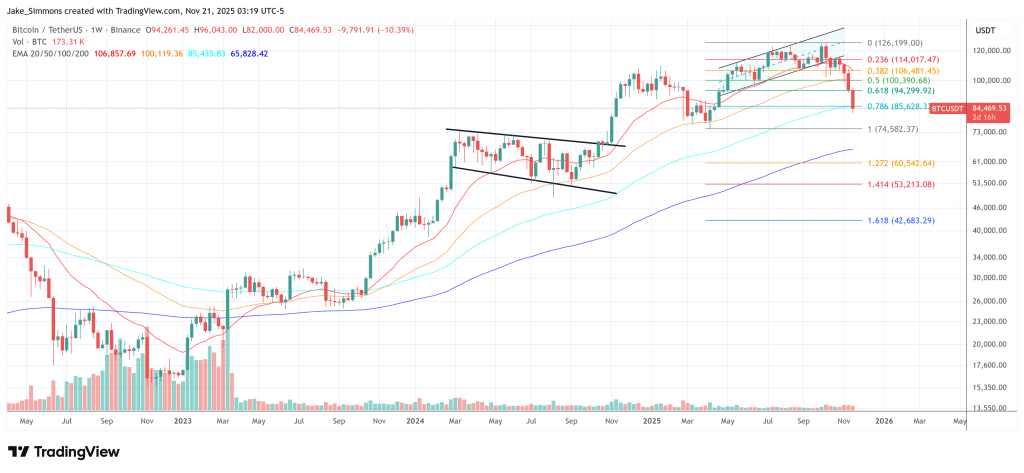With Bitcoin trading around $85,000, Jeff Park, partner and CIO at ProCap BTC, used his November 20 conversation with Anthony Pompliano to argue that the dip could be valuable for reasons that have little to do with short-term “buying the dips” and everything to do with a narrative regime shift. Its central claim is that the two-anchored classical rhythm is losing its foundation.
Why the Bitcoin Crash is Necessary
“The four-year cycle is almost definitely over,” Park said, because what was “based on a historical basis, namely the halving, simply doesn’t matter compared to the additional marginal demand that comes from other channels that have opened up.” According to him, the market is being driven into a different cadence: “logically and fundamentally, the four-year cycle should no longer exist and a new cycle should emerge, more in line with the institutional appetite for venture capital”.
Related reading
Park is careful not to view this as a clean break, as beliefs always cause prices to vary. He pointed out that a large legacy cohort continues to trade as if the four-year scenario were real. “There is still a large group of investors who believe this should exist,” he said, describing them as early adopters with “characteristics that are almost like the occult where they have prophecies.”
The key, according to him, is their control of supply: “the largest holders of Bitcoin in wallets of 10,000 (BTC) and more still control a good part of the market (…) they still represent a third of the Bitcoin market”. This focus makes the cycle potentially reflexive: “if a third of Bitcoin holders believe the four-year cycle is true and they act as if the four-year cycle were true, then it doesn’t really matter because they are the ones setting the prices (…) these things can self-actualize. »
From there, Park explains why weakness at the end of the year could be constructive. He noted that Bitcoin is now “below year to date (…) in 2025,” raising the prospect of a red close. In an intentionally acerbic line, he joked that if 2025 ends negative, “that breaks the four-year cycle because now we have a red (annual) candle and so it’s a three-year cycle.”
Related reading
The humor masks a strategic preference: “maybe we need this red (candle) right now so we can trigger the coming Bitcoin super cycle without ever having to talk about the four-year cycle again.” »
Park described a slightly green fence as the worst of both worlds. “The last thing I honestly want is (…) a year of 5% upside until 2025, where we close at $98,000, $99,000 or $100,000 and that counts as a green year,” he said, because then “next year everyone will be talking about it (…) it’s the year of decline now,” leaving 2026 under the “weight It’s heartbreaking over your head that we’re actually going to have another down year.”
Pompliano spoke of the obvious counter-scenario: “Is there a world where this could just go backwards (…) and hit $140,000 or something like that? Park didn’t rule it out. “It’s entirely possible. Anything can happen,” he replied. But he summed up the tradeoff clearly: “Either we have to hope … that the amount increases a lot to make the year count, or we just try to take a small loss here for the year so that we can completely erase the four-year cycle.”
For Park, Bitcoin at $85,000 is only “good news” to the extent that it increases the chances of shattering a self-reinforcing calendar myth, paving the way for a market driven less by halving folklore and more by institutional risk cycles.
At press time, BTC was trading at $84,469.

Featured image created with DALL.E, chart from TradingView.com




